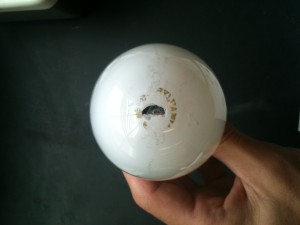I’ve had this problem for some time now and chose today to do some research. Luckily, I found a workaround pretty quickly.
I use the Mozilla based browser GNU IceCat which is functionally equivalent to Mozilla Firefox. When a page is requested, the browser displays a small spinning icon in the left corner of the tab. Loading a page involves three basic steps: converting the URL into an IP address, contacting the web server at the IP address, receiving the web page (and other resources). During the first two steps, the icon will be grey and spinning counter-clockwise. The status bar will show messages like “Looking up google.com” and “Waiting for google.com”. Typically, DNS queries (the first step) take on the order of 100 ms to complete. Therefore if you see the first message, you may have the same problem.
The symptom was that IceCat (Firefox) was taking about 3 to 5 seconds to make DNS queries every time I tried to navigate to a new address. The cause of the problem seems to be that my system is making IPv6 DNS queries first by default but these types of requests are being ignored by the DNS resolver which doesn’t support IPv6. My system sends a query and then waits a certain amount of time before giving up and trying an IPv4 query. That time waiting was the delay I was experiencing.
The ideal fix would be to change the way the DNS resolver responds to IPv6 DNS queries. That’s obviously out of my control. A system-wide fix involves setting up your own DNS resolver – a bit more work than I’m interested in. The easy fix was to address the issue for IceCat (Firefox) only which is good enough for me as web-browsing is my primary internet activity.
The fix is to change the value for the key “network.dns.disableIPv6” from “false” to “true” in IceCat’s (Firefox’s) “about:config” page.
For more information, the issue has been discussed extensively here:
https://bugs.launchpad.net/ubuntu/+source/eglibc/+bug/417757


